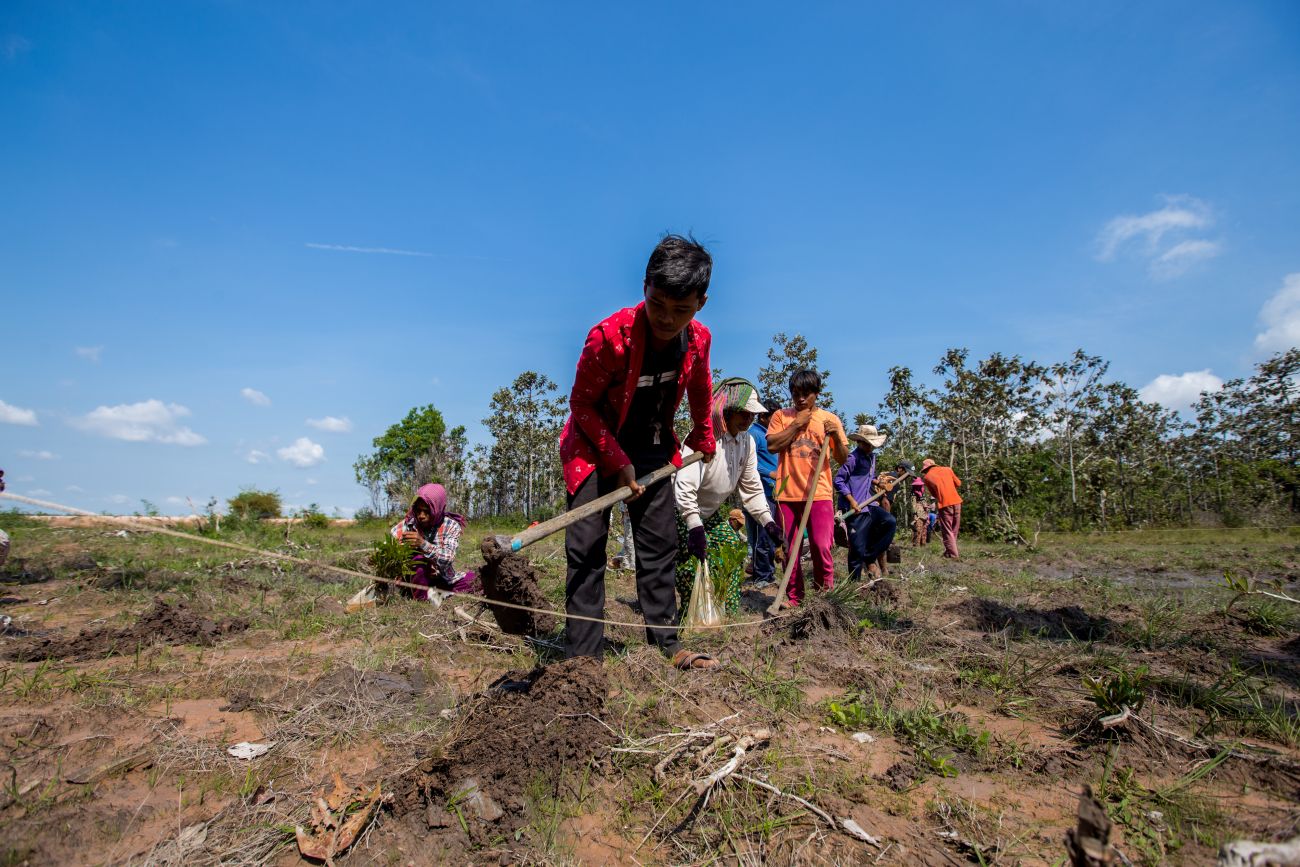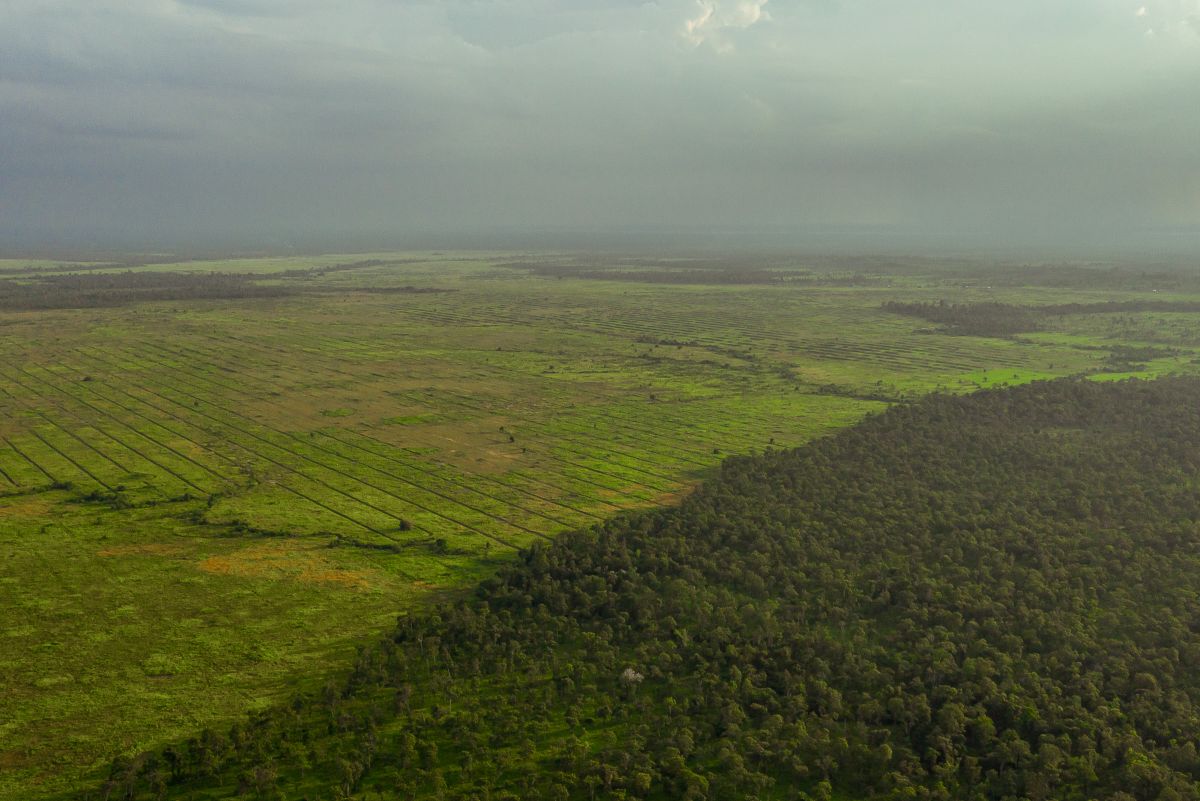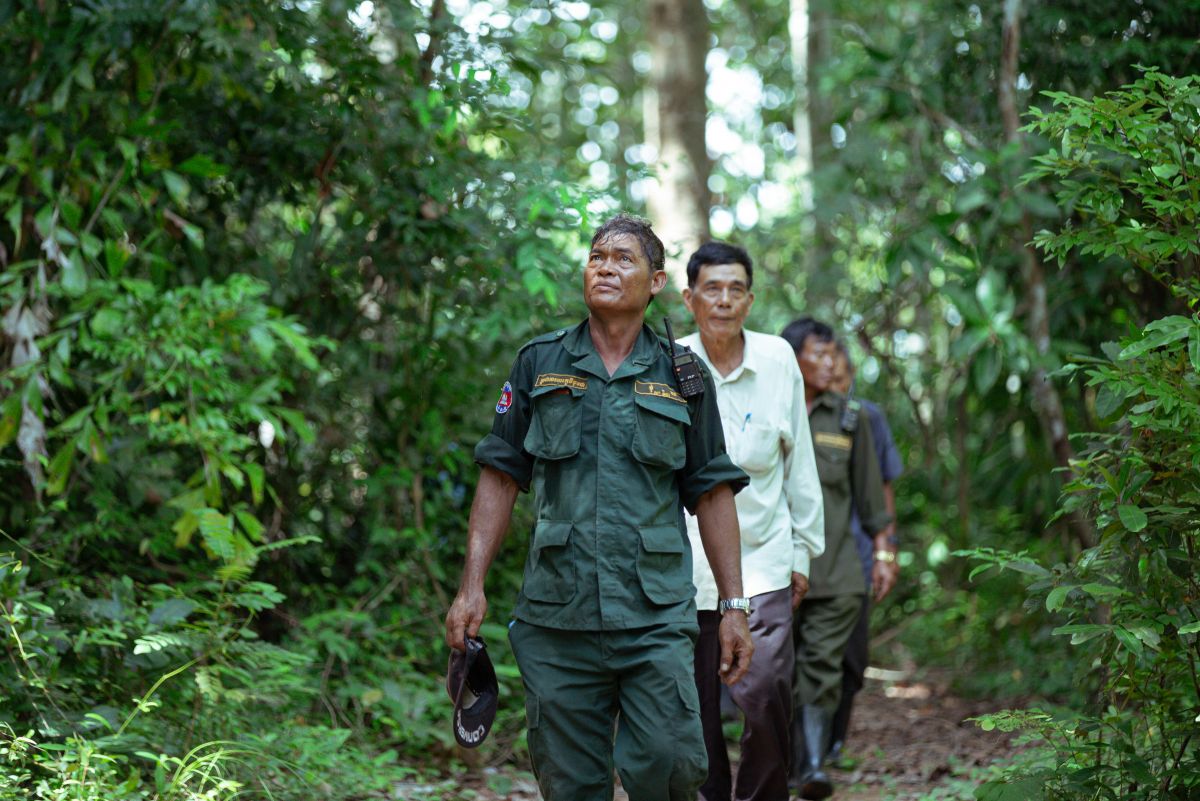

Early in the new century, Cambodia began legal reforms that would gradually substitute forest concessions with economic and social land concessions. These laws would create space for advocates of community forestry to build the necessary legal framework and begin piloting co-management schemes with communities.
In 2001, a new Land Law created a framework for categorizing land as state land, collective property and private land. It also outlined issues of ownership. The following year, a new Forestry Law provided communities with traditional user and extraction rights over certain areas of state-owned forests.
These laws and Cambodia’s 2002 moratorium on forest concessions seemed to signal a move towards different models of forest protection and timber production. They also reflected a shift in thinking about who could manage and benefit from forests. Some civil society groups remained sceptical.
Although the law made it illegal for the newly defined economic land concessions to exceed 10,000 hectares, many companies created proxy and subsidiary companies to expand the parent company’s concession.
The transfer of forest concessions to economic land concessions again placed community-led forestry and forest-dependent communities in a precarious position.
Companies granted economic land concessions were often the same ones that had been granted forest concessions in the past. Forest concessions had simply been renamed. As research by Forest Trends revealed, by 2013 almost all forest clearance was associated with economic land concessions.
The transfer of forest concessions to economic land concessions again placed community-led forestry and forest-dependent communities in a precarious position. On one hand, the reforms gave communities a legal opening to gain tenure over their land. On the other hand, the reforms were developed with limited consultation of communities and experts.
And there was no clear legal guidance on how to actually obtain a community forest.

Legal ambiguity
In 1999, IDRC and RECOFTC funded the Community Forestry Research Project. They worked with officials from the Forestry Administration and the Ministry of Environment to develop guidelines for community-based natural resource management. Together, they conducted research in four provinces to better understand how to set up community-led forestry models. They were discussing findings of the three-year project just as the 2002 Forestry Law was passing through Parliament.
Kim Sarin was part of the research team and one of the ministry officials that RECOFTC had trained in 1996. He and his colleagues used what they had learned in that training to clarify some of the ambiguity in the draft legal reforms.
“I saw the impact of RECOFTC’s collaboration right away,” says Kim, who is now the Ministry of Environment’s Deputy Director of Local Communities. “The information from their research impacted policy and the implementation of policy on the ground.”
Kim says the research also contributed directly to the 2003 Sub-Decree on Community Forestry Management, which was passed to provide rules for the establishment, management and use of community forests. But despite the legal framework, there was little support for implementation at the national and local levels.
A lack of attention and support
In 2004, the Independent Forest Sector Review noted that “many senior government officers give the impression that they believe that community-led forest management warrants little attention”.
Many local authorities agreed, including the most local—the commune councils. Some people believed that community forestry would limit the high income from economic land concession rents and illegal logging and thus would not be in their financial interests. The lack of support from local officials is a major reason why some community forests have failed, says Keang Seng Ky, the Thbong Kropue commune chief and local authority representative of Thbong Domrey Community Forest.

Some communities were left without proper documentation of their community forest and had insecure rights over their land. In such cases, communities were reliant on the word of the Forestry Administration and their own commune chief, both of whom many people did not trust, given the history of impunity for illegal forest activities.
The only way to obtain proper documentation was to formalize their land under a community forest agreement. But these remained ambiguous. As with the 2002 Forest Law, the 2003 sub-decree did not contain specific steps. And where land had high economic value, communities had to compete against economic land concessions that had simple establishment procedures. The sub-decree did little to increase the number of official community forests.
By 2004, only 150 community forests were established. Of them, only one was recognized and approved by the Department of Forestry and Wildlife and the Ministry of Agriculture, Forestry and Fisheries. All the others only received recognition from their respective Provincial Forestry Offices.
“In rhetoric, everyone talked about [community forestry],” says Cor Veer, who led the early RECOFTC training for government officials, including many from Cambodia. “But there was only a small group that really got it.”
There were challenges everywhere, but that small group was determined. They didn’t give up.
